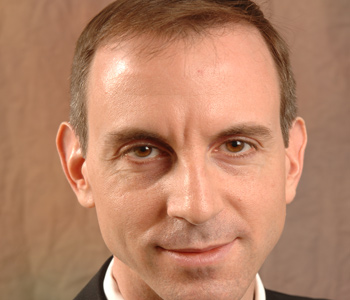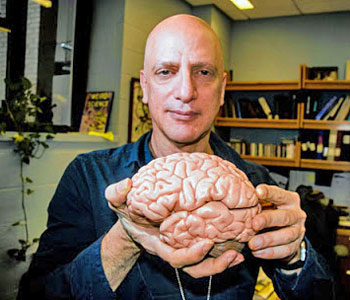Dana Nelson
Bad for Democracy: How the Presidency Undermines the Power of the People
University of Minnesota Press
256 pages, 6 x 9 inches
ISBN: 978 0 8166 5677 6
The first and biggest part of my book is about how we take the president for granted as the symbolic, cultural and institutional center of democracy, and how we take voting for the president to be the essence of democracy—and why those two commonsense assumptions about how our political system works are actually bad for democracy. My book argues that our habit of putting the president at the center of democracy and asking him to be its superhero works to deskill us for the work of democracy. And, it argues that the presidency itself has actually come to work against democracy—against the sovereignty of the People upon which our Constitution’s authority rests. Bad for Democracy tells the story of how this came to be—how the symbolism developed and took root, how the institution developed and began accumulating more and more power, and how, under the new theory of the Unitary Executive, proponents are actually waging a war against democracy, in the name of “democracy.”
The conclusion outlines my ideas for how we can turn back this 200+ year historical trend, and take democracy back, by the People, for the People. I want us to rethink democracy along the lines of an open system. Wikis and time banks are both good conceptual models and tools for this project. In this way of building democracy, our representative government is just one part of the project—it’s the formal institutions that create and administrate the laws and policies we all abide by. We can find creative ways to have far more wide-ranging and substantive input into those processes, and we can find a far broader range of non-governmental activities that can benefit from democratic deliberation, input and action. I think if we start creatively working, both formally and informally, to make democracy something more broadly participatory and wide reaching, we can build a political system around, on top of, and into our current formal representative government that we find more rewarding, more representative, more engaging, and more satisfying.

Over time, citizens have been reconceived less as democratic actors then as passive consumers. For generations now, we have not been taught to think about democracy as our responsibility and our job, so it doesn’t really occur to most people that there’s anything they can do now—besides vote.
As I finished my last book, National Manhood, a historical look at how notions of middle-class manhood and citizenship developed in the early United States, two movies about fictional presidents appeared—Contact and Airforce One. I ended up writing about those movies and their presidents in the conclusion to that book, because they offered so many interesting examples of some of the claims I was making about the symbolic work of the presidency in the early national period and focused some interesting questions about the perdurability of that symbolism. That exercise made me think it might be worth examining the development of the presidency over time and its impact on democracy in the United States. I’ve been working on this project, off and on, for almost a decade. Whenever I gave talks on presidentialism, people from a range of political positions—liberal, conservative, libertarian, green—were excited about the arguments, and eager to see me develop them into a book.
Political scientists and presidential historians continue insisting that Presidents are weak—that they only have the power to “persuade,” following Richard Neustadt’s influential arguments, first published in 1960 and updated in 1980. Following this wisdom, political scientists and historians paid little attention to the campaigning of political conservatives and jurists on the subject of the unitary executive beginning in the early 1980s. That theory’s proponents—many of them members of the Federalist Society—spent the 80s and 90s arguing for this theory in law journals and think tank forums. And their theory has been implemented and defended by every president since Reagan. Because George W. Bush was the first openly to advocate for the unitary executive, many have assumed that this is his unique perspective. It’s important to pay attention to its longer history; we need to understand this model of executive power—and its aims—if we mean to combat it.
Proponents argue that the Framers created a Unitary Executive in the Constitution, but that’s a claim that is very easy to rebuff. One delegate to the Constitutional Convention, New York’s Alexander Hamilton, may have personally preferred it. But other participants in the Convention resoundingly rejected his pro-monarchical views. In Madison’s notes on the Convention, it’s evident that the Framers worked to avoid giving the president any kind of power that might deliver the country to a system of one-man rule. They did worry about the unpredictability of the legislature—the “democratic branch”—and that’s why they gave the President veto power. But they also admired the legislature as the best place for self-government to be conducted, and were very clear about their aims to construct what they termed a “Congressional government” where the “democratic branch”—the legislature—would be primary.
The Unitary Executive is in fact a controversial US corporate model where the CEO is also the Chair of the Board. It is a twentieth-century model for undivided corporate power. Since the Bush presidency, political scientists have begun training their attention directly on the rationales for and implications of the Unitary Executive—its proclivities toward unilateral powers and actions—and its hard turn away from the “weaker” skills of persuasion. They are examining the expansion of executive unilateral powers, and debating about whether those powers really work to consolidate the president’s individual legacy. I’m less concerned with individual legacies in this book than in paying attention to what happens to our democracy in the face of those expanding unilateral powers.
While occasionally it’s a relief to turn our responsibilities over to someone else, I believe when most people think about it, they prefer to manage their responsibilities themselves. I think it is probably like that for democracy too. But here, the problem is that over time, citizens have been reconceived less as democratic actors then as passive consumers. For generations now, we have not been taught to think about democracy as our responsibility and our job, so it doesn’t really occur to most people that there’s anything they can do now—besides vote. This book urges us to rethink our democratic commitments and action plans before it’s literally too late.
The-president-as-superhero myth promises all the democracy with none of the work. As such it teaches citizens to admire rule by strong individuals and to abjure the messy workings—disagreement, slow debates, compromise, bargaining—of actual democracy. This training works against our own abilities to navigate and wield democratic sovereignty. Subscribing to the search for a nationally redemptive hero every four years makes citizens feel less, and not more, powerful, and therefore all the more in need of a superhero presidential rescue. Every cycle, we wind up disgusted by our leadership. And every presidential election leads citizens to the hope that this time, we’ve got it right. When we turn out to be wrong—again—about the salvific powers of this president, we helplessly put our hopes in the next. This boom-bust cycle of hope for the presidential rescue fuels the power of the presidency, if not always the actual power of individual presidents. It offers no such boon for the citizens, though. Believing that the solution for democratic problems can only come through the intervention of a “great president,” we put our energy into exaggerated and mythical hopes for his agency, rather than investigating, investing in and cultivating our own.

The search for a nationally redemptive hero every four years makes citizens feel less, and not more, powerful, and therefore all the more in need of a superhero presidential rescue. Every cycle, we wind up disgusted by our leadership.
The presidency is not working for people’s sense of democratic involvement, agency, or fair play. But many point out how few people currently vote, asking: how can you appeal to citizens to roll up their sleeves and do the hard work of revitalizing democracy when they can’t even be bothered to drive to the poll once every four years? I know the media and many political scientists are fond of pointing to low voter turnout as evidence that most citizens aren’t worthy of the powers of self-rule. But I think that single number of non-voters conceals a lot of frustrated political engagement. While I don’t dispute that the roll of non-voters contains people who simply do not care about becoming involved in their political system—no matter what it is—I think there are lots of reasons people don’t vote. Sometimes they don’t vote precisely because they are so politically passionate, and disgusted by the way they can’t find anything close to their preferences represented in the political spectrum. Some people don’t vote because they are in a political minority and their vote never “wins”—if you never see your interests represented after an election, it’s easy to just give up on voting, even though you still care about politics. I think if we worked to revitalize our formal political system and our political culture so that they did a better job at incentivizing more people to stay involved with the democratic “game”—for instance, we could use proportional representation for multi-body institutions like city councils, school boards, Congress, and preferential voting schemes for single-body offices like mayor, governor and president—people would feel that their vote wasn’t being wasted, they would see their views gaining some airtime in political bodies, and they might be more interested to try participating again.




We don't put paywalls. We don't distract you with ads. We don't sell your data.
Please help to keep this running!